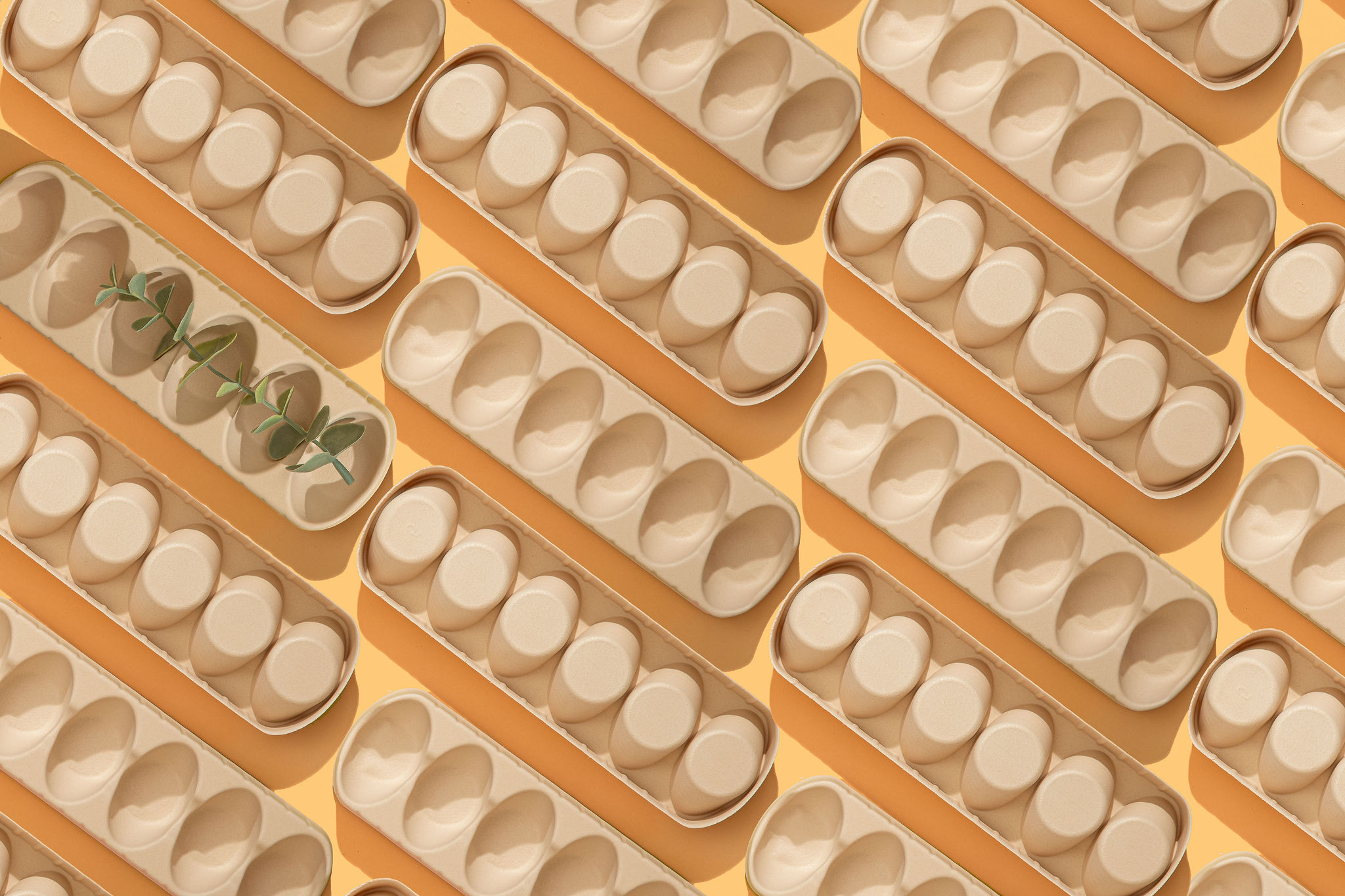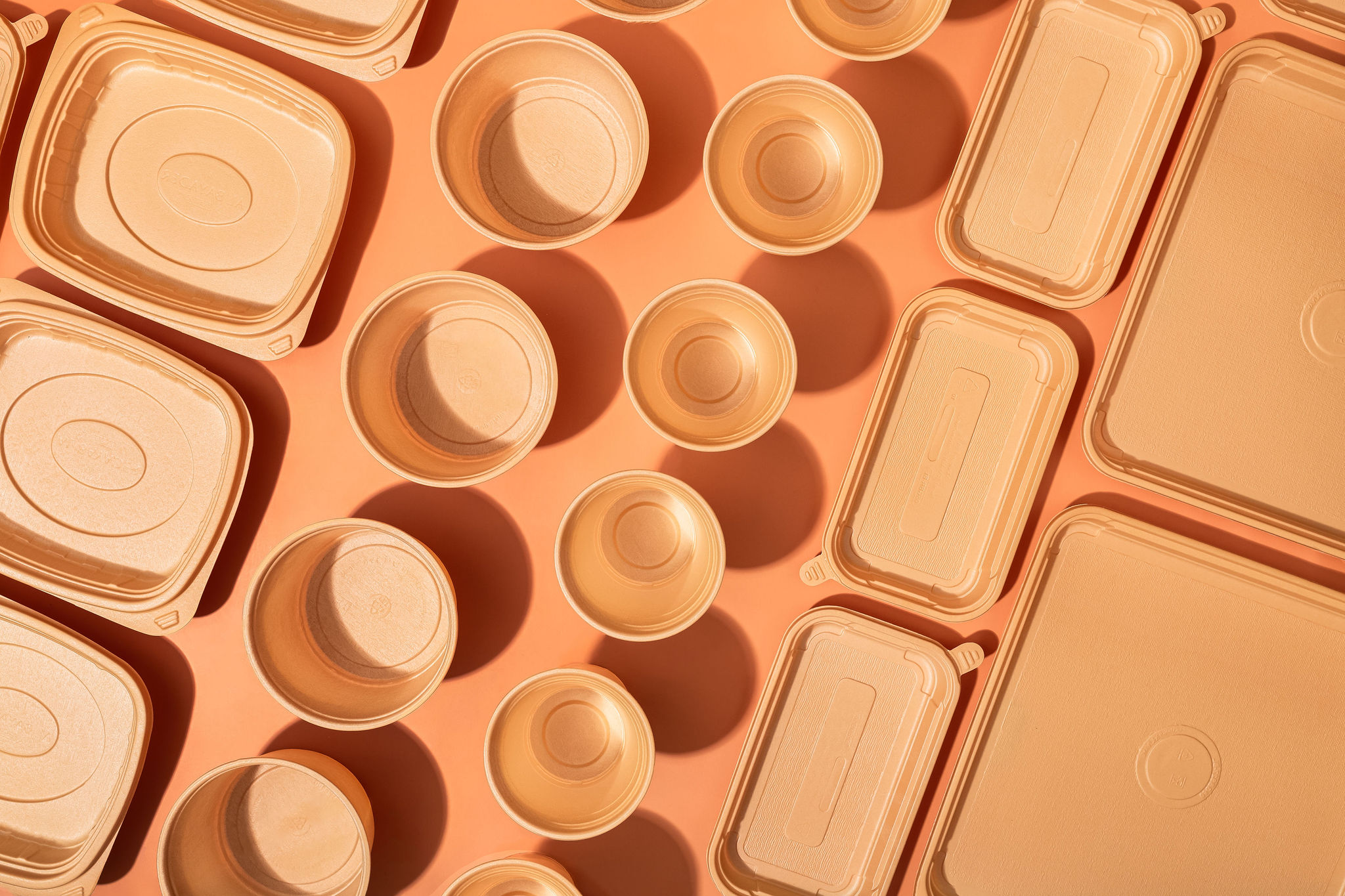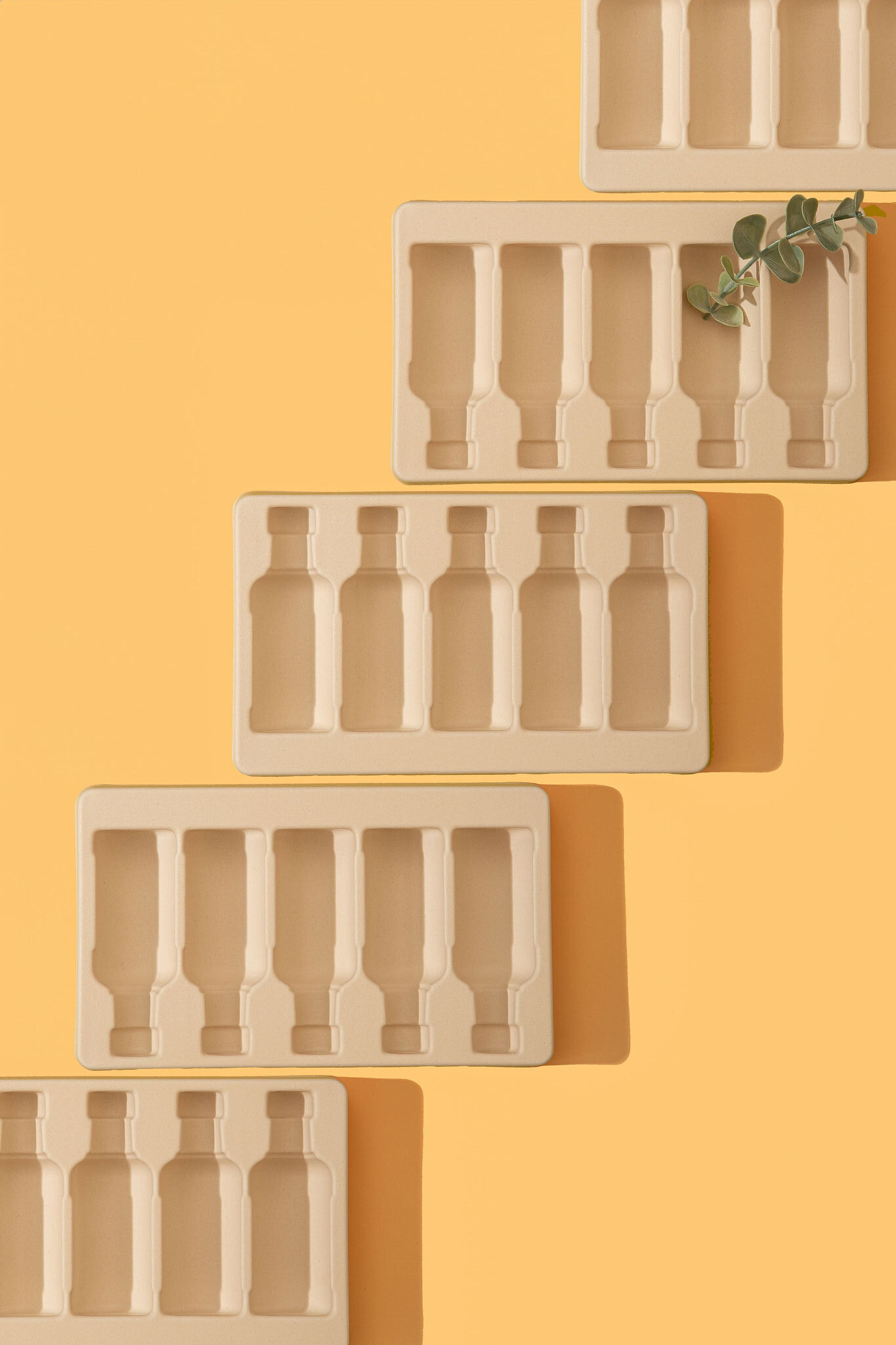Disrupting thermoforming from within the value chain
Ready to adopt sustainable packaging, but worried about inefficient processes or costly new machinery? With Sulapac Flow 1.7, switching to biobased thermoforming is simple – and you can get started today.

Brands using thermoformed packaging are facing a difficult choice: whether to shift to fiber-based materials, often expensive and fragile, or continue with plastic, widely used but comes with high environmental cost, especially in the context of single use packaging.
Third group of alternatives exist, but they usually mean compromising on functionality or processability.
Sulapac Flow 1.7 is a bio-based, biodegradable thermoforming material that combines the strength and versatility of plastic with the sustainability benefits of fiber-based materials. It fits right into the existing thermoforming value chain. Let’s have a look what this means in practice and what benefits it brings for brands and manufacturers.
1. Continuity with the same equipment – and same partners
For most brands, sustainable packaging needs to work today, not years down the line.
Moving from thermoformed plastic to fiber-based alternatives such as molded pulp or carton usually means investing in new machinery, robots, and handling systems. In practice, the entire production setup must be rebuilt. “We’re talking about million-euro investments when switching from plastics to fiber-based alternatives,“ says Juho Luukkanen, Sales Director at Sulapac.
Switching to Sulapac, on the contrary, doesn’t require reinventing your production. “Sulapac is converted into packaging using the exact same machinery as with conventional plastic,” explains Luukkanen.
Thermoformers such as Thomas Ellis Engineering, Project Packaging, Algus, and Merocap are examples of thermoformers already serving their customers with inserts and other packaging parts made of Sulapac.
The ecosystem is growing fast as demand increases. “What many brands truly value is that by choosing our material, they don’t need to change their existing partners; Any thermoformer can process Sulapac,” Luukkanen remarks.
2. Simple process and efficient production
Getting started with Sulapac is simple: from first contact to first samples usually only takes about a month. A brand or thermoformer contacts Sulapac or one of the sheet suppliers directly, a test roll is delivered, and a trial run is carried out. After some durability testing and potential design adjustments the next step is pilot production, or, in some cases, the customer proceeds straight to commercial production.
If a thermoforming line already runs PET or PS, it will typically process Flow 1.7 just as well. Most thermoformers can use their existing parameters and molds, with little to no adjustment needed. Many find the material so straightforward to run that they don’t need any technical support at all. The stable quality of the material ensures there’s no unnecessary machine downtime.
Some thermoformers have reported that the production seems to be even faster than with conventional plastic. “The potentially shorter production cycle is likely resulting from the lower molding temperature required by Flow 1.7 and therefore slightly shorter heating time compared to conventional plastic,” says Joona Kontinen, Growth and Innovations Manager at Sulapac.

3. Steady supply of material
Sulapac sheets for thermoforming are available in custom size and thickness from industry operators who have been supplying the thermoforming industry for decades. For example, Scanfill serves thermoformers in Europe and Primex in the US.
“Thermoformers purchase Sulapac material from the extruders in sheets or rolls just like they have been doing with conventional plastic – it’s business as usual for both parties,” Luukkanen says.
Sheet extrudes purchase the material from Sulapac in granule form. The granules are produced with the same compounding machinery as conventional plastics. This ensures the material can be produced fast and in large volumes while scaling up the production is also straightforward.
“With our current production capacity we are already well positioned to meet growing demand, and we are further optimizing our processes to deliver even more competitive pricing for our customers moving forward,” says Otto Vesala, Director, Operations at Sulapac.
4. Flexible packaging design
Sulapac Flow 1.7 offers the same design flexibility as plastic. It can be colored with a masterbatch during production or printed directly for decorative finishes. However, many choose to leave it in its natural wood tone, which doesn’t resemble either plastic or carton.
Just like conventional plastic, Sulapac Flow 1.7 allows for detailed structures including engraved logos and icons, and has an ‘elastic memory’. When packaging formats need to change – for seasonal collections or family packs – Sulapac adapts.
5. Premium look and feel
Sustainability is vital, but not at the expense of quality. Premium brands need packaging that looks elegant, protects the product, and holds its shape over time. With Sulapac Flow 1.7, inserts stay smooth and refined, even after repeated use.
“With fiber-based options, inserts can quickly start to look cheap once the product is taken out. Some materials may even release dust on the product, which ruins the customer experience. With Sulapac, the inserts keep their shape and premium feel,” says Luukkanen.
The Atom Group’s Drinks by the Dram tasting set is a case in point. Sulapac partnered with them to create a premium packaging free from conventional plastic components. The packaging has now been nominated in the Innovation of the Year category at the UK Packaging Awards 2025.
The miniature bottles in the tasting set are clicked in and out of the insert multiple times, so durability is key.
“The elastic recovery of Sulapac Flow 1.7 is one of its plastic-like features that makes it so practical,” says Luukkanen. “It protects the product better than carton, and its moisture resistance also ensures that the insert remains impeccable despite potential spills or humidity.”

6. Smaller carbon footprint and sustainable end of life
Especially when considering the high scrap percentage in thermoforming, the mechanical recyclability of Sulapac Flow is a crucial feature. With Flow, scrap material can be re-extruded multiple times, supporting closed-loop production.
Sulapac Flow 1.7 has 53% lower cradle-to-gate carbon footprint compared to PET and 50% lower compared to PS. For brands, that means measurable emission reductions alongside a clear step away from fossil materials.
At the end of life, whether Sulapac ends up incinerated or on the landfill, it is a more environmentally sound option than conventional plastic: it leaves no persistent microplastics and no ecotoxic chemicals behind.
“Right now the market isn’t ready for massive new investments. Brands want solutions they can start using right away. That’s why drop-in materials are so important,” notes Luukkanen.
By fitting seamlessly into the existing thermoforming value chain and meeting the product requirements, Sulapac Flow 1.7 offers brands a faster, safer path to more sustainable packaging.
Download our ebook or book a meeting with our experts to learn more about sustainable thermoforming.